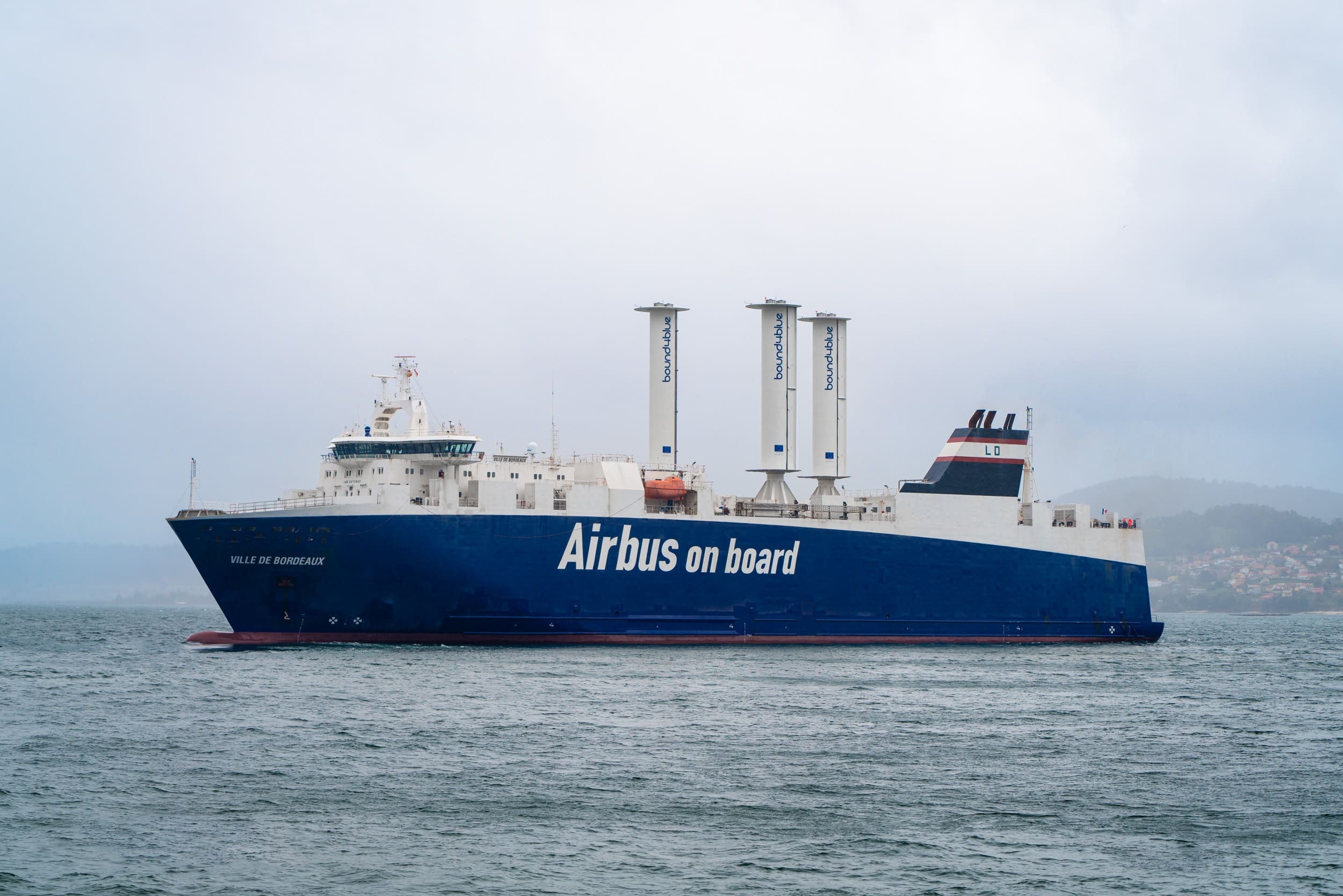
The Ville de Bordeaux is a 20-year-old ship, but it’s officially a game-changer in its industry thanks to a revolutionary wind-power propulsion system. The old vessel fitted with brand-new eSails has successfully left France and is on its way to the US for the delivery of Airbus aircraft parts.
There are several modern-day sailing technologies that harness the pure power of wind in a more efficient way—the eSail system developed by the Spain-based bound4blue combined automation with an electric-powered air-suction system. The result is an auxiliary propulsion system that claims to generate up to seven times more lift than traditional sails, which reduces the load on the main ship engines. In the end, this means fuel efficiency and fewer emissions.
The Ville de Bordeaux has been preparing since last fall for this pioneering voyage. It’s a milestone for both the sailing technology developer (this is officially the fourth installation of the eSail technology on a ship) and for Airbus – the aerospace giant wants to reduce CO2 emissions resulting from its maritime operations to half, compared to the 2015 levels.
At the end of last year, the eSails were also installed on a heavy-duty juice carrier for the first time. The MV Atlantic Orchard can carry up to 32,000 cubic meters (over 8 million gallons) of fresh or concentrated juice per trip. It was fitted with four eSails, each 26 meters high (85.3 feet), and estimated to cut CO2 emissions by 10%.
The Airbus-chartered vessel features three shorter eSails (22 meters/72.1 feet), which shows the adaptability and flexibility of this innovative system. Plus, installing them on the Ville de Bordeaux was an important confirmation. It proved that this specific type of sail is compatible even with ships that have a high weather deck and a bigger windage area.
State-of-the-art systems like the eSail can successfully turn existing, old vessels into greener alternatives without sacrificing performance. They’re just as suitable for newly-built ships. The eSail will also be installed on a cargo-passenger ship that’s currently being built for the Tahitian operator SNA THUA’A PAE.










